NCERT Solutions for Maths Chapter 7 Fraction Class 6 - FREE PDF Download
Chapter 7 of Fraction Class 6 Maths delves into the fundamental concept of fractions, which represent parts of a whole. This chapter is crucial as it lays the groundwork for understanding how to handle quantities less than one. Students will learn about different types of fractions, such as proper fractions, improper fractions, and mixed numbers. The focus is on recognizing and converting between these types, which is essential for solving fraction problems accurately.

- 5.1Exercise 7.1
- 5.2Exercise 7.2
- 5.3Exercise 7.3
- 5.4Exercise 7.4
- 5.5Exercise 7.5
- 5.6Exercise 7.6
NCERT Solutions for Class 6 Maths Chapter 7 Fraction emphasizes the importance of mastering basic operations with fractions, including addition, subtraction, multiplication, and division. These skills are vital for progressing in mathematics and are frequently used in everyday situations. By the end of this chapter, students should be comfortable working with fractions and understanding their applications in real-life contexts.
Glance on Maths Chapter 7 Class 6 - Fractions
Chapter 7 focuses on the fundamental concept of fractions, which represent parts of a whole.
It introduces different types of fractions, such as proper fractions, improper fractions, and mixed numbers.
Proper fractions have numerators smaller than their denominators.
Improper fractions have numerators equal to or greater than their denominators.
Mixed numbers consist of a whole number and a fractional part combined.
The chapter includes formulas for adding fractions:
$\dfrac{a}{b}+\dfrac{c}{d}=\dfrac{ad+bc}{bd}$
It covers the formula for subtracting fractions:
$\dfrac{a}{b}-\dfrac{c}{d}=\dfrac{ad-bc}{bd}$
Multiplication of fractions is explained using the formula:
$\dfrac{a}{b}\times \dfrac{c}{d}=\dfrac{ac}{bd}$
Division of fractions is taught with the formula:
$\dfrac{c}{d}= \dfrac{a}{b}\times \dfrac{d}{c}$
Mastering fractions is essential for advanced math topics and practical uses like cooking and measuring.
This article contains chapter notes, important questions, exemplar solutions, exercises and video links for Chapter 7 - Fractions, which you can download as PDFs.
There are six exercises (47 fully solved questions) in Class 6 Maths Chapter 7 Fractions.
Access Exercise Wise NCERT Solutions for Chapter 7 Maths Class 6
Current Syllabus Exercises of Class 6 Maths Chapter 7 |
Exercises Under NCERT Solutions for Class 6 Maths Chapter 7 Fractions
Exercise 7.1: This exercise introduces the basic idea of fractions. Students learn how to represent parts of a whole using fractions. Visual aids like shaded parts of figures help illustrate the concept. The exercise focuses on understanding the numerator (the top number) and the denominator (the bottom number) and their respective roles in a fractions class 6.
Exercise 7.2: In this exercise 7.2 fractions class 6, students explore proper and improper fractions. Proper fractions have numerators smaller than denominators, indicating parts less than a whole. Improper fractions have numerators that are larger than or equal to denominators, indicating parts equal to or greater than a whole. Students also practice converting improper fractions to mixed numbers (a whole number and a fraction) and vice versa in fractions class 6.
Exercise 7.3: This exercise is about finding and understanding equivalent fractions, which are different fractions that represent the same value. Students learn how to create equivalent fractions by multiplying or dividing both the numerator and the denominator by the same non-zero number in fraction for class 6. This skill is essential for comparing fractions and performing arithmetic operations with them.
Exercise 7.4: In exercise 7.4 fraction for class 6, students practice simplifying fractions to their simplest form. Simplifying involves dividing the numerator and the denominator by their greatest common divisor (GCD). This exercise reinforces the concept of the GCD and teaches students how to find it, ensuring they can reduce any fraction to its lowest terms.
Exercise 7.5: This exercise covers the addition and subtraction of fractions. Students start with like fractions (fractions with the same denominators) and move to unlike fractions (fractions with different denominators). They learn how to find a common denominator for unlike fractions and then perform the addition or subtraction. This exercise is crucial for understanding how to accurately combine fractional quantities.
Exercise 7.6: The final exercise focuses on the multiplication of fractions. Students learn the rules for multiplying fractions, including multiplying the numerators together and the denominators together. The exercise also covers multiplying fractions by whole numbers. This foundational skill is important for more advanced mathematical operations involving fractions.
Access NCERT Solutions for Class 6 Maths Chapter 7 – Fractions
Exercise 7.1
1. Write the Fraction representing the shaded portion:
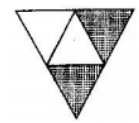
Ans: Total number of parts = 4
Shaded parts = 2
fraction of shaded parts = \[\dfrac{2}{4}\]
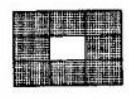
Ans: Total number of parts = 9
Shaded parts = 8
fraction of shaded parts = \[\dfrac{8}{9}\]
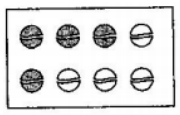
Ans: Total number of parts = 8
Shaded parts = 4
fraction of shaded parts = \[\dfrac{4}{8}\]
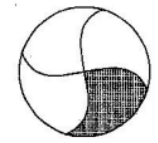
Ans: Total number of parts = 4
Shaded parts = 1
fraction of shaded parts = \[\dfrac{1}{4}\]
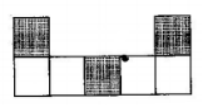
Ans: Total number of parts = 7
Shaded parts = 3
fraction of shaded parts = \[\dfrac{3}{7}\]
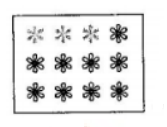
Ans: Total number of parts = 12
Shaded parts = 9
fraction of shaded parts = \[\dfrac{9}{{12}}\]
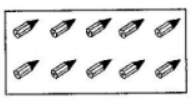
Ans: Total number of parts = 10
Shaded parts = 10
fraction of shaded parts = \[\dfrac{{10}}{{10}}\]
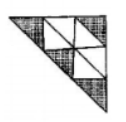
Ans: Total number of parts = 9
Shaded parts = 4
fraction of shaded parts = \[\dfrac{4}{9}\]
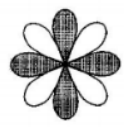
Ans: Total number of parts = 8
Shaded parts = 4
fraction of shaded parts = \[\dfrac{4}{8}\]
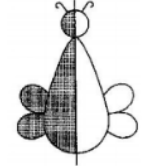
Ans: Total number of parts = 2
Shaded parts = 1
fraction of shaded parts = \[\dfrac{1}{2}\]
2. Colour the part according to the given fraction:
\[\mathbf{\dfrac{1}{6}}\]
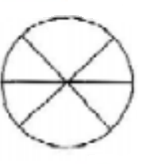
Ans:
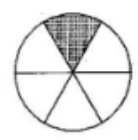
\[\mathbf{\dfrac{1}{4}}\]
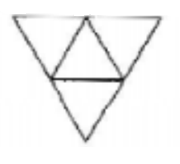
Ans:
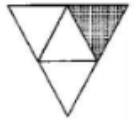
\[\mathbf{\dfrac{1}{3}}\]
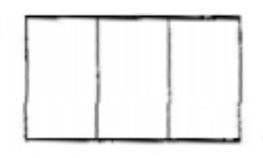
Ans:
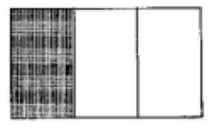
\[\mathbf{\dfrac{3}{4}}\]
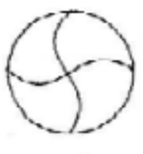
Ans:
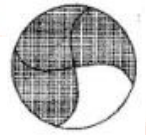
\[\mathbf{\dfrac{4}{9}}\]
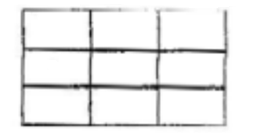
Ans:
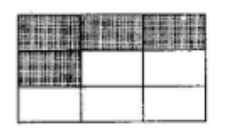
3. Identify the error, if any?
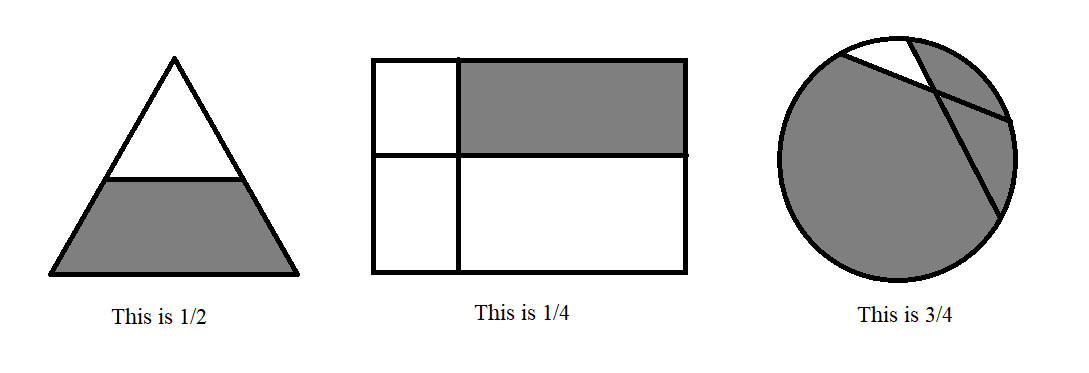
Ans: There is an error present in each of them. The figures are not equally divided into parts.
4. What fraction of a day is 8 hours?
Ans: Total number of hours in a day = 24
Therefore, fraction of 8 hours = \[\dfrac{8}{{24}}\] or \[\dfrac{1}{3}\]
5. What fraction of an hour is 40 minutes?
Ans: Minutes in an hour = 60
fraction of 40 minutes = \[\dfrac{{40}}{{60}}\]or \[\dfrac{2}{3}\]
6. Arya, Abhimanyu and Vivek shared lunch. Arya has brought two sandwiches, one made of vegetable and one of jam. The other two boys forgot to bring their lunch. Arya agreed to share his sandwiches so that each person will have an equal share of each sandwich.
How can Arya divide his sandwiches so that each person has an equal share?
Ans: He will have to divide each sandwich into 3 equal parts
What part of a sandwich will each boy receive?
Ans: Each boy will receive \[1 \times \dfrac{1}{3}\]or \[\dfrac{1}{3}\] sandwiches of each type.
7. Kanchan dyes dresses. She had to dye 30 dresses. She has so far finished 20 dresses. What fraction of dresses has she finished?
Ans: Total number of dresses = 30
Number of dresses finished by Kanchan = 20
fraction of dresses finished = \[\dfrac{{20}}{{30}}\]or \[\dfrac{2}{3}\]
8. Write the natural numbers from 2 to 12. What fraction of them are prime numbers?
Ans: Natural numbers from 2 to 12: 2, 3, 4, 5, 6, 7, 8, 9, 10, 11, 12
Prime numbers are: 2, 3, 5, 7, 11
Total natural numbers = 11
Total prime numbers = 5
fraction of prime numbers = \[\dfrac{5}{{11}}\]
9. Write the natural numbers from 102 to 113. What fraction of them are prime numbers?
Ans: Natural numbers from 102 to 113: 102, 103, 104, 105, 106, 107, 108, 109, 110, 111, 112, 113
Prime numbers from 102 to 113: 103, 107, 109, 113
Natural numbers = 12
Prime numbers = 4
fraction of prime numbers = \[\dfrac{4}{{12}}\] or \[\dfrac{1}{3}\]
10. What fraction of these circles have ‘X’s in them?
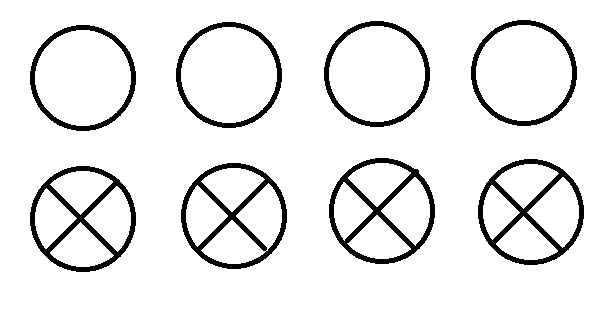
Ans: Total number of circles = 8
Number of circles with X in them = 4
fraction of circles with X in them = \[\dfrac{4}{8}\] or \[\dfrac{1}{2}\]
11.Kristin received a CD player for her birthday. She bought 3 CDs and received 5 others as gifts. What fraction of her total CDs did she buy and what fraction did she receive as gifts?
Ans: Total number of CDs with Kristin = 3 + 5
= 8
Total number of CDs she bought = 3
CDs she received as gift = 5
fraction of CDs she bought = \[\dfrac{3}{8}\]
fraction of CDs she received as gift = \[\dfrac{5}{8}\]
Exercise 7.2
1.Draw number lines and locate the points on them:
\[\mathbf{\dfrac{1}{2},\dfrac{1}{4},\dfrac{3}{4},\dfrac{4}{4}}\]
Ans:

\[\mathbf{\dfrac{1}{8},\dfrac{2}{8},\dfrac{3}{8},\dfrac{7}{8}}\]
Ans:

\[\mathbf{\dfrac{2}{5},\dfrac{3}{5},\dfrac{8}{5},\dfrac{4}{5}}\]
Ans:

2. Express the following fractions as mixed fractions:
\[\mathbf{\dfrac{{20}}{3}}\]
Ans: We will divide 20 by 3 to get the answer
$\quad \,6$
$3{\overline{)\,\,{20}\quad\quad}}$
$\quad\underline{\,-18\,\,} $
$\quad{\,\, 2 \,\,}$
\[\therefore \dfrac{{20}}{3} = 6\dfrac{2}{3}\]
\[\mathbf{\dfrac{{11}}{5}}\]
Ans: We will divide 11 by 5 to get the answer
$\quad \,2$
$5{\overline{)\,\,{11}\quad\quad}}$
$\quad\underline{\,-10\,\,} $
$\quad{\,\, 1 \,\,}$
\[\therefore \dfrac{{11}}{5} = 2\dfrac{1}{5}\]
\[\mathbf{\dfrac{{17}}{7}}\]
Ans: We will divide 17 by 7 to get the answer
$\quad \,2$
$7{\overline{)\,\,{17}\quad\quad}}$
$\quad\underline{\,-14\,\,} $
$\quad{\,\, 3 \,\,}$
\[\therefore \dfrac{{17}}{7} = 2\dfrac{3}{7}\]
\[\mathbf{\dfrac{{28}}{5}}\]
Ans: We will divide 28 by 5 to get the answer
$\quad \,5$
$5{\overline{)\,\,{28}\quad\quad}}$
$\quad\underline{\,-25\,\,} $
$\quad{\,\, 3 \,\,}$
\[\therefore \dfrac{{28}}{5} = 5\dfrac{3}{5}\]
\[\mathbf{\dfrac{{19}}{6}}\]
Ans: We will divide 19 by 6 to get the answer
$\quad \,3$
$6{\overline{)\,\,{19}\quad\quad}}$
$\quad\underline{\,-18\,\,} $
$\quad{\,\, 1 \,\,}$
\[\therefore \dfrac{{19}}{6} = 3\dfrac{1}{6}\]
\[\mathbf{\dfrac{{35}}{9}}\]
Ans: We will divide 35 by 9 to get the answer
$\quad \,3$
$9{\overline{)\,\,{35}\quad\quad}}$
$\quad\underline{\,-27\,\,} $
$\quad{\,\, 8 \,\,}$
\[\therefore \dfrac{{35}}{9} = 3\dfrac{8}{9}\]
3. Express the following as improper fractions:
\[\mathbf{7\dfrac{3}{4}}\]
Ans:
$7\dfrac{3}{4} = \dfrac{{\left( {7 \times 4} \right) + 3}}{4}\\$
$7\dfrac{3}{4} = \dfrac{{28 + 3}}{4}\\$
$7\dfrac{3}{4} = \dfrac{{31}}{4}$
\[\mathbf{5\dfrac{6}{7}}\]
Ans:
$5\dfrac{6}{7} = \dfrac{{\left( {5 \times 7} \right) + 6}}{7}\\$
$5\dfrac{6}{7} = \dfrac{{35 + 6}}{7}\\$
$5\dfrac{6}{7} = \dfrac{{41}}{7}$
\[\mathbf{2\dfrac{5}{6}}\]
Ans:
$2\dfrac{5}{6} = \dfrac{{\left( {2 \times 6} \right) + 5}}{6}\\$
$2\dfrac{5}{6} = \dfrac{{12 + 5}}{6}\\$
$2\dfrac{5}{6} = \dfrac{{17}}{6}$
\[\mathbf{10\dfrac{3}{5}}\]
Ans:
$10\dfrac{3}{5} = \dfrac{{\left( {10 \times 5} \right) + 3}}{5}$
$10\dfrac{3}{5} = \dfrac{{50 + 3}}{5}\\$
$10\dfrac{3}{5} = \dfrac{{53}}{5}$
\[\mathbf{9\dfrac{3}{7}}\]
Ans:
$9\dfrac{3}{7} = \dfrac{{\left( {9 \times 7} \right) + 3}}{7}\\$
$9\dfrac{3}{7} = \dfrac{{63 + 3}}{7}\\$
$9\dfrac{3}{7} = \dfrac{{66}}{7}$
\[\mathbf{8\dfrac{4}{9}}\]
Ans:
$8\dfrac{4}{9} = \dfrac{{\left( {8 \times 9} \right) + 4}}{9}\\$
$8\dfrac{4}{9} = \dfrac{{72 + 4}}{9}\\$
$8\dfrac{4}{9} = \dfrac{{76}}{9}$
Exercise 7.3
1. Write the fractions. Are all these fractions equivalent?

Ans: \[\dfrac{1}{2},\dfrac{2}{4},\dfrac{3}{6},\dfrac{4}{8}\]. All of these fractions are equivalent.

Ans: \[\dfrac{4}{{12}},\dfrac{3}{9},\dfrac{2}{6},\dfrac{1}{3},\dfrac{6}{{15}}\]. These fractions are not equivalent.
2. Write the fraction and pair up the equivalent fractions to each row:

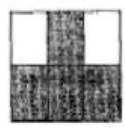
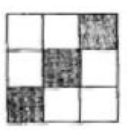
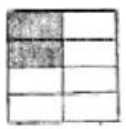
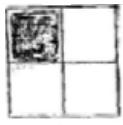
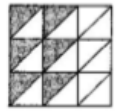
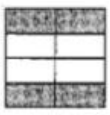
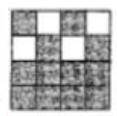
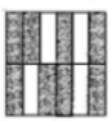
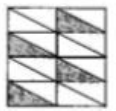
Ans: The corresponding matches are
(a) - (ii), (b) – (iv), (c) – (i), (d) – (v), (e) – (iii)
3. Replace \[\mathbf{\boxed{}}\] in each of the following by the correct number:
$\mathbf{\dfrac{2}{7} = \dfrac{8}{{\boxed{}}}}$
Ans:
$\dfrac{2}{7} = \dfrac{{2 \times 4}}{{7 \times 4}} $
$\dfrac{2}{7} = \dfrac{8}{{\boxed{28}}} \\ $
$\mathbf{\dfrac{5}{8} = \dfrac{{10}}{{\boxed{}}}}$
Ans:
$\dfrac{5}{8} = \dfrac{{5 \times 2}}{{8 \times 2}} \\$
$\dfrac{5}{8} = \dfrac{{10}}{{\boxed{16}}} \\ $
$\mathbf{\dfrac{3}{5} = \dfrac{{\boxed{}}}{{20}}}$
Ans:
$\dfrac{3}{5} = \dfrac{{3 \times 4}}{{5 \times 4}} \\$
$\dfrac{3}{5} = \dfrac{{\boxed{12}}}{{20}} \\ $
$\mathbf{\dfrac{{45}}{{60}} = \dfrac{{15}}{{\boxed{}}}}$
Ans:
$\dfrac{{45}}{{60}} = \dfrac{{45 \div 3}}{{60 \div 3}} \\$
$\dfrac{{45}}{{60}} = \dfrac{{15}}{{\boxed{20}}} \\ $
$\mathbf{\dfrac{{18}}{{24}} = \dfrac{{\boxed{}}}{4}}$
Ans:
$\dfrac{{18}}{{24}} = \dfrac{{18 \div 6}}{{24 \div 6}} \\$
$\dfrac{{18}}{{24}} = \dfrac{{\boxed3}}{4} \\ $
4. Find the equivalent fraction of \[\dfrac{3}{5}\] having:
Denominator 20
Ans:
$\dfrac{3}{5} = \dfrac{{3 \times 4}}{{5 \times 4}}\\$
$\dfrac{3}{5} = \dfrac{{12}}{{20}}$
Numerator 9
Ans:
$\dfrac{3}{5} = \dfrac{{3 \times 3}}{{5 \times 3}}\\$
$\dfrac{3}{5} = \dfrac{9}{{15}}$
Denominator 30
Ans:
$\dfrac{3}{5} = \dfrac{{3 \times 6}}{{5 \times 6}}\\$
$\dfrac{3}{5} = \dfrac{{18}}{{30}}$
Numerator 27
Ans:
$\dfrac{3}{5} = \dfrac{{3 \times 9}}{{5 \times 9}}\\$
$\dfrac{3}{5} = \dfrac{{27}}{{45}}$
5. Find the equivalent fraction of \[\dfrac{{36}}{{48}}\]with:
Numerator 9
Ans:
$\dfrac{{36}}{{48}} = \dfrac{{36 \div 4}}{{48 \div 4}}\\$
$\dfrac{{36}}{{48}} = \dfrac{9}{{12}}$
Denominator 4
Ans:
$\dfrac{{36}}{{48}} = \dfrac{{36 \div 12}}{{48 \div 12}}\\$
$\dfrac{{36}}{{48}} = \dfrac{3}{4}$
6. Check whether the given fraction is equivalent:
\[\mathbf{\dfrac{5}{9},\dfrac{{30}}{{54}}}\]
Ans:
$\dfrac{5}{9} = \dfrac{{5 \times 6}}{{9 \times 6}}\\$
$\dfrac{5}{9} = \dfrac{{30}}{{54}}$
Hence, both \[\dfrac{5}{9}\] and \[\dfrac{{30}}{{54}}\]are equivalent.
\[\mathbf{\dfrac{3}{{10}},\dfrac{{12}}{{50}}}\]
Ans:
$\dfrac{3}{{10}} = \dfrac{{3 \times 5}}{{10 \times 5}}\\$
$\dfrac{3}{{10}} = \dfrac{{15}}{{50}}$
Hence, \[\dfrac{3}{{10}}\]and \[\dfrac{{12}}{{50}}\] are not equivalent.
\[\mathbf{\dfrac{7}{{13}},\dfrac{5}{{11}}}\]
Ans:
$\dfrac{7}{{13}} = \dfrac{{7 \times 11}}{{13 \times 11}}\\$
$\dfrac{7}{{13}} = \dfrac{{77}}{{143}}$
And, \[\dfrac{5}{{13}} = \dfrac{{5 \times 11}}{{13 \times 11}}\]
\[\dfrac{5}{{13}} = \dfrac{{55}}{{143}}\]
Hence, \[\dfrac{7}{{13}}\]and \[\dfrac{5}{{13}}\]are not equivalent.
7. Reduce the following fractions to simplest form:
\[\mathbf{\dfrac{{48}}{{60}}}\]
Ans:
$\dfrac{{48}}{{60}} = \dfrac{{48/12}}{{60/12}}\\$
$\dfrac{{48}}{{60}} = \dfrac{4}{5}$
\[\mathbf{\dfrac{{150}}{{60}}}\]
Ans:
$\dfrac{{150}}{{60}} = \dfrac{{150/30}}{{60/30}}\\$
$\dfrac{{150}}{{60}} = \dfrac{5}{2}$
\[\mathbf{\dfrac{{84}}{{98}}}\]
Ans:
$\dfrac{{84}}{{98}} = \dfrac{{84/14}}{{98/14}}\\$
$\dfrac{{84}}{{98}} = \dfrac{6}{7}$
\[\mathbf{\dfrac{{12}}{{52}}}\]
Ans:
$\dfrac{{12}}{{52}} = \dfrac{{12/4}}{{52/4}}\\$
$\dfrac{{12}}{{52}} = \dfrac{3}{{13}}$
\[\mathbf{\dfrac{7}{{28}}}\]
Ans:
$\dfrac{7}{{28}} = \dfrac{{7/7}}{{28/7}}\\$
$\dfrac{7}{{28}} = \dfrac{1}{4}$
8. Ramesh had 20 pencils, Sheelu had 50 pencils and Jamaal had 80 pencils. After 4 months, Ramesh used up 10 pencils, Sheelu used up 25 pencils and Jamaal used up 40 pencils. What fraction did each use up? Check is each has used up an equal fraction of her/his pencils?
Ans: Pencils with Ramesh = 20
Pencils used by Ramesh = 10
fraction of used by pencils by Ramesh = \[\dfrac{{10}}{{20}}\]or \[\dfrac{1}{2}\]
Pencils with Sheelu = 50
Pencils used by Sheelu = 25
fraction of pencils used by Sheelu = \[\dfrac{{25}}{{50}}\] or \[\dfrac{1}{2}\]
Pencils with Jamaal = 80
Pencils used by Jamaal = 40
fraction of pencils used by Jamaal = \[\dfrac{{40}}{{80}}\]or \[\dfrac{1}{2}\]
Yes, they all have used the same fraction of pencils.
9. Match the equivalent fractions and write two more for each:
\[\mathbf{\dfrac{{250}}{{400}}}\]
Ans:
$\dfrac{{250}}{{400}} = \dfrac{{250/50}}{{400/50}}\\$
$\dfrac{{250}}{{400}} = \dfrac{5}{8},\dfrac{{10}}{{16}},\dfrac{{15}}{{24}}$
\[\mathbf{\dfrac{{180}}{{200}}}\]
Ans:
$\dfrac{{180}}{{200}} = \dfrac{{180/20}}{{200/20}}\\$
$\dfrac{{180}}{{200}} = \dfrac{9}{{10}},\dfrac{{18}}{{20}},\dfrac{{27}}{{30}}$
\[\mathbf{\dfrac{{660}}{{990}}}\]
Ans:
$\dfrac{{660}}{{990}} = \dfrac{{660/330}}{{990/330}}\\$
$\dfrac{{660}}{{990}} = \dfrac{2}{3},\dfrac{4}{6},\dfrac{6}{9}$
\[\mathbf{\dfrac{{180}}{{360}}}\]
Ans:
$\dfrac{{180}}{{360}} = \dfrac{{180/180}}{{360/180}}\\$
$\dfrac{{180}}{{360}} = \dfrac{1}{2},\dfrac{2}{4},\dfrac{3}{6}$
\[\mathbf{\dfrac{{220}}{{550}}}\]
Ans:
$\dfrac{{220}}{{550}} = \dfrac{{220/110}}{{550/110}}\\$
$\dfrac{{220}}{{550}} = \dfrac{2}{5},\dfrac{4}{{10}},\dfrac{6}{{15}}$
$\mathbf{\dfrac{2}{3}}$
$\mathbf{\dfrac{2}{5}}$
$\mathbf{\dfrac{1}{2}}$
$\mathbf{\dfrac{5}{8}}$
$\mathbf{\dfrac{9}{{10}}}$
Exercise 7.4
1. Write shaded portion as fraction. Arrange them in ascending and descending order using correct sign ‘<’, ‘>’, ‘=’ between the fractions:

Ans: Shaded fractions are \[\dfrac{3}{8},\dfrac{6}{8},\dfrac{4}{8},\dfrac{1}{8}\]
Ascending order: \[\dfrac{1}{8} < \dfrac{3}{8} < \dfrac{4}{8} < \dfrac{6}{8}\]
Descending order: \[\dfrac{6}{8} > \dfrac{4}{8} > \dfrac{3}{8} > \dfrac{1}{8}\]

Ans: Shaded fractions are \[\dfrac{8}{9},\dfrac{4}{9},\dfrac{3}{9},\dfrac{6}{9}\]
Ascending order: \[\dfrac{3}{9} < \dfrac{4}{9} < \dfrac{6}{9} < \dfrac{8}{9}\]
Descending order: \[\dfrac{8}{9} > \dfrac{6}{9} > \dfrac{4}{9} > \dfrac{3}{9}\]
Show \[\dfrac{2}{6},\dfrac{4}{6},\dfrac{8}{6}\] and \[\dfrac{6}{6}\] on the number line. Put appropriate signs between the factions given:
$\dfrac{5}{6}\boxed{}\dfrac{2}{6},\dfrac{3}{6}\boxed{}0,\dfrac{1}{6}\boxed{}\dfrac{6}{6},\dfrac{8}{6}\boxed{}\dfrac{5}{6}$
Ans: Number line
\[\dfrac{5}{6}\boxed > \dfrac{2}{6}\], \[\dfrac{1}{6}\boxed < \dfrac{6}{6}\], \[\dfrac{3}{6}\boxed > \dfrac{0}{6}\], \[\dfrac{8}{6}\boxed > \dfrac{5}{6}\]
2. Compare the fractions and put an appropriate sign:
$\mathbf{\dfrac{3}{6}\boxed{}\dfrac{5}{6}}$
Ans: \[\dfrac{3}{6}\boxed < \dfrac{5}{6}\]
$\mathbf{\dfrac{1}{7}\boxed{}\dfrac{1}{4}}$
Ans: \[\dfrac{1}{7}\boxed < \dfrac{1}{4}\]
$\mathbf{\dfrac{4}{5}\boxed{}\dfrac{5}{5}}$
Ans: \[\dfrac{4}{5}\boxed < \dfrac{5}{5}\]
$\mathbf{\dfrac{3}{5}\boxed{}\dfrac{3}{7}}$
Ans: \[\dfrac{3}{5}\boxed < \dfrac{3}{7}\]
3. Make five more each pair and put appropriate signs.
Ans:
\[\dfrac{9}{{10}}\boxed > \dfrac{6}{{10}}\]
\[\dfrac{1}{3}\boxed > \dfrac{1}{6}\]
\[\dfrac{1}{8}\boxed < \dfrac{1}{5}\]
\[\dfrac{7}{8}\boxed < \dfrac{{11}}{8}\]
\[\dfrac{{11}}{{13}}\boxed > \dfrac{9}{{13}}\]
4. Look at the figures and write ‘<’ or ‘>’ between the given pairs of fractions:
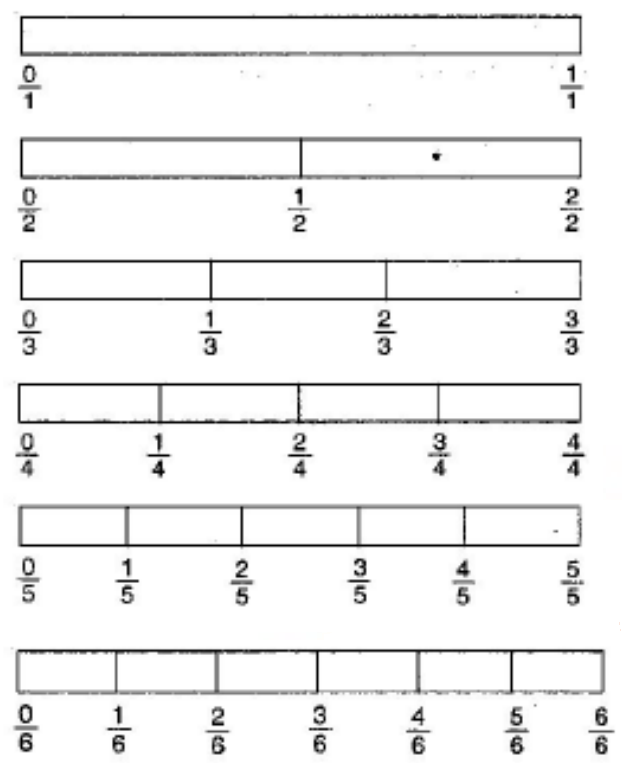
$\mathbf{\dfrac{1}{6}\boxed{}\dfrac{1}{3}}$
Ans: \[\dfrac{1}{6}\boxed < \dfrac{1}{3}\]
$\mathbf{\dfrac{3}{4}\boxed{}\dfrac{2}{6}}$
Ans: \[\dfrac{3}{4}\boxed > \dfrac{2}{6}\]
$\mathbf{\dfrac{2}{3}\boxed{}\dfrac{2}{4}}$
Ans: \[\dfrac{2}{3}\boxed > \dfrac{2}{4}\]
$\mathbf{\dfrac{6}{6}\boxed{}\dfrac{3}{3}}$
Ans: \[\dfrac{6}{6}\boxed = \dfrac{3}{3}\]
$\mathbf{\dfrac{5}{6}\boxed{}\dfrac{5}{5}}$
Ans: \[\dfrac{5}{6}\boxed < \dfrac{5}{5}\]
Make five more such problems and solve them with your friends.
Five more problems
\[\mathbf{\dfrac{1}{2}\boxed{}\dfrac{3}{6}}\]
\[\mathbf{\dfrac{2}{3}\boxed{}\dfrac{3}{5}}\]
\[\mathbf{\dfrac{3}{4}\boxed{}\dfrac{4}{6}}\]
\[\mathbf{\dfrac{5}{6}\boxed{}\dfrac{2}{2}}\]
\[\mathbf{\dfrac{0}{1}\boxed{}\dfrac{0}{6}}\]
Solutions
\[\dfrac{1}{2}\boxed = \dfrac{3}{6}\]
\[\dfrac{2}{3}\boxed > \dfrac{3}{5}\]
\[\dfrac{3}{4}\boxed > \dfrac{4}{6}\]
\[\dfrac{5}{6}\boxed < \dfrac{2}{2}\]
\[\dfrac{0}{1}\boxed = \dfrac{0}{6}\]
5. How quickly can you do this? Fill appropriate sign (<, =, >):
$\mathbf{\dfrac{1}{2}\boxed{}\dfrac{1}{5}}$
Ans: \[\dfrac{1}{2}\boxed > \dfrac{1}{5}\]
$\mathbf{\dfrac{2}{4}\boxed{}\dfrac{3}{6}}$
Ans: \[\dfrac{2}{4}\boxed = \dfrac{3}{6}\]
$\mathbf{\dfrac{3}{5}\boxed{}\dfrac{2}{3}}$
Ans: \[\dfrac{3}{5}\boxed < \dfrac{2}{3}\]
$\mathbf{\dfrac{3}{4}\boxed{}\dfrac{2}{8}}$
Ans: \[\dfrac{3}{4}\boxed > \dfrac{2}{8}\]
$\mathbf{\dfrac{3}{5}\boxed{}\dfrac{6}{5}}$
Ans: \[\dfrac{3}{5}\boxed < \dfrac{6}{5}\]
$\mathbf{\dfrac{7}{9}\boxed{}\dfrac{3}{9}}$
Ans: \[\dfrac{7}{9}\boxed > \dfrac{3}{9}\]
$\mathbf{\dfrac{1}{4}\boxed{}\dfrac{2}{8}}$
Ans: \[\dfrac{1}{4}\boxed > \dfrac{2}{8}\]
$\mathbf{\dfrac{6}{{10}}\boxed{}\dfrac{4}{5}}$
Ans: \[\dfrac{6}{{10}}\boxed < \dfrac{4}{5}\]
$\mathbf{\dfrac{3}{4}\boxed{}\dfrac{7}{8}}$
Ans: \[\dfrac{3}{4}\boxed < \dfrac{7}{8}\]
$\mathbf{\dfrac{6}{{10}}\boxed{}\dfrac{4}{5}}$
Ans: \[\dfrac{6}{{10}}\boxed < \dfrac{4}{5}\]
$\mathbf{\dfrac{5}{{7}}\boxed{}\dfrac{15}{21}}$
Ans: \[\dfrac{5}{7}\boxed = \dfrac{{15}}{{21}}\]
6. The following fractions represent just three different numbers. Separate them groups of equivalent fractions, by changing each one to its simplest form:
\[\mathbf{\dfrac{2}{{12}}}\]
Ans: \[\dfrac{2}{{12}} = \dfrac{1}{6}\]
\[\mathbf{\dfrac{3}{{15}}}\]
Ans: \[\dfrac{3}{{15}} = \dfrac{1}{5}\]
\[\mathbf{\dfrac{8}{{50}}}\]
Ans: \[\dfrac{8}{{50}} = \dfrac{4}{{25}}\]
\[\mathbf{\dfrac{{16}}{{100}}}\]
Ans: \[\dfrac{{16}}{{100}} = \dfrac{4}{{25}}\]
\[\mathbf{\dfrac{{10}}{{60}}}\]
Ans: \[\dfrac{{10}}{{60}} = \dfrac{1}{6}\]
\[\mathbf{\dfrac{{15}}{{75}}}\]
Ans: \[\dfrac{{15}}{{75}} = \dfrac{1}{5}\]
\[\mathbf{\dfrac{{12}}{{60}}}\]
Ans: \[\dfrac{{12}}{{60}} = \dfrac{1}{5}\]
\[\mathbf{\dfrac{{16}}{{96}}}\]
Ans: \[\dfrac{{16}}{{96}} = \dfrac{1}{6}\]
\[\mathbf{\dfrac{{12}}{{75}}}\]
Ans: \[\dfrac{{12}}{{75}} = \dfrac{4}{{25}}\]
\[\mathbf{\dfrac{{12}}{{72}}}\]
Ans: \[\dfrac{{12}}{{72}} = \dfrac{1}{6}\]
\[\mathbf{\dfrac{3}{{18}}}\]
Ans: \[\dfrac{3}{{18}} = \dfrac{1}{6}\]
\[\mathbf{\dfrac{4}{{25}}}\]
Ans: \[\dfrac{4}{{25}} = \dfrac{4}{{25}}\]
I group: $\dfrac{1}{5}$[(b), (f), (g)]
II group: $\dfrac{1}{6}$[(a), (e), (h), (j), (k)]
III group: $\dfrac{4}{{25}}$[(c), (d), (i), (l)]
7. Find answers to the following. Write and indicate how you solved them:
Is \[\mathbf{\dfrac{5}{9}}\]equal to \[\mathbf{\dfrac{4}{5}}\]?
Ans: We have \[\dfrac{5}{9}\]and \[\dfrac{4}{5}\]
\[\dfrac{{5 \times 5}}{{9 \times 5}} = \dfrac{{25}}{{45}}\]
And,
\[\dfrac{{4 \times 9}}{{5 \times 9}} = \dfrac{{36}}{{45}}\]
Since, \[\dfrac{{25}}{{45}}\]and \[\dfrac{{36}}{{45}}\]are not equal. Hence, \[\dfrac{5}{9}\]and \[\dfrac{4}{5}\] are not equal.
Is \[\mathbf{\dfrac{9}{{16}}}\]equal to \[\mathbf{\dfrac{5}{9}}\]?
Ans: We have \[\dfrac{9}{{16}}\]and \[\dfrac{5}{9}\]
\[\dfrac{{9 \times 9}}{{16 \times 9}} = \dfrac{{81}}{{144}}\]
And,
\[\dfrac{{5 \times 16}}{{9 \times 16}} = \dfrac{{80}}{{144}}\]
Since, \[\dfrac{{81}}{{144}}\]and \[\dfrac{{80}}{{144}}\]are not equal. Hence, \[\dfrac{9}{{16}}\]and \[\dfrac{5}{9}\] are not equal.
Is \[\mathbf{\dfrac{4}{5}}\]equal to \[\mathbf{\dfrac{{16}}{{20}}}\]?
Ans: We have \[\dfrac{4}{5}\]and \[\dfrac{{16}}{{20}}\]
\[\dfrac{{4 \times 20}}{{5 \times 20}} = \dfrac{{80}}{{100}}\]
And,
\[\dfrac{{16 \times 5}}{{20 \times 5}} = \dfrac{{80}}{{100}}\]
Since, \[\dfrac{{80}}{{100}}\]and \[\dfrac{{80}}{{100}}\]are equal. Hence, \[\dfrac{4}{5}\]and \[\dfrac{{16}}{{20}}\] are equal.
Is \[\mathbf{\dfrac{1}{{15}}}\]equal to \[\mathbf{\dfrac{4}{{30}}}\]?
Ans: We have \[\dfrac{1}{{15}}\]and \[\dfrac{4}{{30}}\]
\[\dfrac{{1 \times 2}}{{15 \times 2}} = \dfrac{2}{{30}}\]
And,
\[\dfrac{{4 \times 1}}{{30 \times 1}} = \dfrac{4}{{30}}\]
Since, \[\dfrac{2}{{30}}\]and \[\dfrac{4}{{30}}\]are not equal. Hence, \[\dfrac{1}{{15}}\]and \[\dfrac{4}{{30}}\] are not equal.
8. Ila read 25 pages of a book containing 100 pages. Lalita read \[\dfrac{2}{5}\] of the same book. Who read less?
Ans: Total pages in the book = 100
Pages read by Ila = 25
fraction of pages read by Ila = \[\dfrac{{25}}{{100}}\]or \[\dfrac{1}{4}\]
fraction of pages read by Lalita = \[\dfrac{2}{5}\]
\[\dfrac{1}{4} < \dfrac{2}{5}\]
Hence, Ila read less pages.
9. Rafiq exercised for \[\dfrac{3}{6}\] of an hour, while Rohit exercised for \[\dfrac{3}{4}\] of an hour. Who exercised for a longer time?
Ans: fraction of an hour exercised by Rafiq = \[\dfrac{3}{6}\]
fraction of hour exercised by Rohit = \[\dfrac{3}{4}\]
\[\dfrac{3}{6} < \dfrac{3}{4}\]
Hence, Rohit exercised for longer time than Rafiq.
10. In a class A of 25 students, 20 passed in first class; in another class B of 30 students, 24 passed in first class. In which class was a greater fraction of students getting first class?
Ans: Total students in class A = 25
Number of students passed in class A = 20
fraction of students passed in class A = \[\dfrac{{20}}{{25}}\]or \[\dfrac{4}{5}\]
Total students in class B = 30
Number of students passed in class B = 24
fraction of students passed in class B = \[\dfrac{{24}}{{30}}\]or \[\dfrac{4}{5}\]
Therefore, each class has same fraction of passed students.
Exercise 7.5
1. Write the fractions appropriately as additions or subtractions

Ans: The fraction form is
$\dfrac{1}{5} + \dfrac{2}{5} = \dfrac{{1 + 2}}{5} \\$
$\dfrac{1}{5} + \dfrac{2}{5} = \dfrac{3}{5} \\ $

Ans: The fraction form is
$\dfrac{5}{5} - \dfrac{3}{5} = \dfrac{{5 - 3}}{5} \\$
$\dfrac{5}{5} - \dfrac{3}{5} = \dfrac{2}{5} \\ $

Ans: The fraction form is
$\dfrac{2}{6} + \dfrac{3}{6} = \dfrac{{2 + 3}}{6} \\$
$\dfrac{2}{6} + \dfrac{3}{6} = \dfrac{5}{6} \\$
2. Solve
\[\mathbf{\dfrac{1}{{18}} + \dfrac{1}{{18}}}\]
Ans: We are given \[\dfrac{1}{{18}} + \dfrac{1}{{18}}\]
$\dfrac{1}{{18}} + \dfrac{1}{{18}} = \dfrac{2}{{18}}\\$
$= \dfrac{1}{9}$
\[\mathbf{\dfrac{8}{{15}} + \dfrac{3}{{15}}}\]
Ans: We are given \[\dfrac{8}{{15}} + \dfrac{3}{{15}}\]
$ \dfrac{8}{{15}} + \dfrac{3}{{15}} = \dfrac{{8 + 3}}{{18}}\\$
\[\mathbf{\dfrac{7}{7} - \dfrac{5}{7}}\]
Ans: We are given \[\dfrac{7}{7} - \dfrac{5}{7}\]
$\dfrac{7}{7} - \dfrac{5}{7} = \dfrac{{7 - 5}}{7}\\$
$= \dfrac{2}{7}$
\[\mathbf{\dfrac{1}{{22}} + \dfrac{{21}}{{22}}}\]
Ans: We are given \[\dfrac{1}{{22}} + \dfrac{{21}}{{22}}\]
$\dfrac{1}{{22}} + \dfrac{{21}}{{22}} = \dfrac{{1 + 21}}{{22}}\\$
$= \dfrac{23}{22}$
\[\mathbf{\dfrac{{12}}{{15}} - \dfrac{7}{{15}}}\]
Ans: We are given \[\dfrac{{12}}{{15}} - \dfrac{7}{{15}}\]
$\dfrac{{12}}{{15}} - \dfrac{7}{{15}} = \dfrac{{12 - 7}}{{15}}\\$
$= \dfrac{5}{{15}}$
\[\mathbf{\dfrac{5}{8} + \dfrac{3}{8}}\]
Ans: We are given \[\dfrac{5}{8} + \dfrac{3}{8}\]
$\dfrac{5}{8} + \dfrac{3}{8} = \dfrac{{5 + 3}}{8}\\$
$= \dfrac{8}{8}\\$
$= 1$
\[\mathbf{1 - \dfrac{2}{3},\left( {1 = \dfrac{3}{3}} \right)}\]
Ans: We are given \[1 - \dfrac{2}{3}\]
$1 - \dfrac{2}{3} = \dfrac{3}{3} - \dfrac{2}{3}\\$
$= \dfrac{{3 - 2}}{3}\\$
$= \dfrac{1}{3}$
\[\mathbf{\dfrac{1}{4} + \dfrac{0}{4}}\]
Ans: We are given \[\dfrac{1}{4} + \dfrac{0}{4}\]
$\dfrac{1}{4} + \dfrac{0}{4} = \dfrac{{1 + 0}}{4}\\$
$= \dfrac{1}{4}$
\[\mathbf{3 - \dfrac{{12}}{5}}\]
Ans: We are given \[3 - \dfrac{{12}}{5}\]
$3 - \dfrac{{12}}{5} = \dfrac{{15}}{5} - \dfrac{{12}}{5}\\$
$= \dfrac{{15 - 12}}{5}\\$
$= \dfrac{3}{5}$
3. Shubham painted \[\dfrac{2}{3}\]of the wall space in his room. His sister Madhavi helped and painted \[\dfrac{1}{3}\] of the wall space. How much did they paint together?
Ans: fraction of wall painted by Shubham = \[\dfrac{2}{3}\]
fraction of wall painted by Madhavi = \[\dfrac{1}{3}\]
$\text{Total fraction of painting done by them} = \dfrac{2}{3} + \dfrac{1}{3} \\$
$= \dfrac{{2 + 1}}{3} \\$
$= \dfrac{3}{3} \\$
$= 1$
Therefore, the total wall has been painted by both of them.
4. Fill in the missing fractions:
\[\mathbf{\dfrac{7}{{10}} - \boxed{} = \dfrac{3}{{10}}}\]
Ans: Let the unknown fraction be x
$\dfrac{7}{{10}} - x = \dfrac{3}{{10}}\\$
$x = \dfrac{7}{{10}} - \dfrac{3}{{10}}\\$
$x = \dfrac{{7 - 3}}{{10}}\\$
$x = \dfrac{4}{{10}}$
\[\mathbf{\boxed{} - \dfrac{3}{{21}} = \dfrac{5}{{21}}}\]
Ans: Let the unknown fraction be x
$x - \dfrac{3}{{21}} = \dfrac{5}{{21}}\\$
$x = \dfrac{3}{{21}} + \dfrac{5}{{21}}\\$
$x = \dfrac{{3 + 5}}{{21}}\\$
$x = \dfrac{8}{{21}}$
\[\mathbf{\boxed{} - \dfrac{3}{6} = \dfrac{3}{6}}\]
Ans: Let the unknown fraction be x
$x - \dfrac{3}{6} = \dfrac{3}{6}\\$
$x = \dfrac{3}{6} + \dfrac{3}{6}\\$
$x = \dfrac{{3 + 3}}{6}\\$
$x = \dfrac{6}{6} \text{ or }1$
\[\mathbf{\boxed{} + \dfrac{5}{{27}} = \dfrac{{12}}{{27}}}\]
Ans: Let the unknown fraction x
$x + \dfrac{5}{{27}} = \dfrac{{12}}{{27}}\\$
$x = \dfrac{{12}}{{27}} - \dfrac{5}{{27}}\\$
$x = \dfrac{{12 - 5}}{{27}}\\$
$x = \dfrac{7}{{27}}$
5. Javed was given \[\dfrac{5}{7}\]of a basket of oranges. What fraction of oranges was left in the basket?
Ans: fraction of oranges given to Javed = \[\dfrac{5}{7}\]
The whole basket is represented by 1
$\text{fraction of oranges left in the basket} = 1 - \dfrac{5}{7}\\$
$= \dfrac{7}{7} - \dfrac{5}{7}\\$
$= \dfrac{{7 - 5}}{7}\\$
$= \dfrac{2}{7}$
Hence, \[\dfrac{2}{7}\] oranges are left in the basket.
Exercise 7.6
1. Solve:
\[\mathbf{\dfrac{2}{3} + \dfrac{1}{7}}\]
Ans: We are given \[\dfrac{2}{3} + \dfrac{1}{7}\]
$\dfrac{2}{3} + \dfrac{1}{7} = \dfrac{{2 \times 7 + 1 \times 3}}{{21}}\\$
$\dfrac{2}{3} + \dfrac{1}{7} = \dfrac{{14 + 3}}{{21}}\\$
$\dfrac{2}{3} + \dfrac{1}{7} = \dfrac{{17}}{{21}}$
\[\mathbf{\dfrac{3}{{10}} + \dfrac{7}{{15}}}\]
Ans: We are given \[\dfrac{3}{{10}} + \dfrac{7}{{15}}\]
$\dfrac{3}{{10}} + \dfrac{7}{{15}} = \dfrac{{3 \times 3 + 7 \times 2}}{{30}}\\$
$\dfrac{3}{{10}} + \dfrac{7}{{15}} = \dfrac{{9 + 14}}{{30}}\\$
$\dfrac{3}{{10}} + \dfrac{7}{{15}} = \dfrac{{23}}{{30}}$
\[\mathbf{\dfrac{4}{9} + \dfrac{2}{7}}\]
Ans: We are given \[\dfrac{4}{9} + \dfrac{2}{7}\]
$\dfrac{4}{9} + \dfrac{2}{7} = \dfrac{{4 \times 7 + 2 \times 9}}{{63}}\\$
$\dfrac{4}{9} + \dfrac{2}{7} = \dfrac{{28 + 18}}{{63}}\\$
$\dfrac{4}{9} + \dfrac{2}{7} = \dfrac{{46}}{{63}}$
\[\mathbf{\dfrac{5}{7} + \dfrac{1}{3}}\]
Ans: We are given \[\dfrac{5}{7} + \dfrac{1}{3}\]
$\dfrac{5}{7} + \dfrac{1}{3} = \dfrac{{5 \times 3 + 1 \times 7}}{{21}}\\$
$\dfrac{5}{7} + \dfrac{1}{3} = \dfrac{{15 + 7}}{{21}}\\$
$\dfrac{5}{7} + \dfrac{1}{3} = \dfrac{{22}}{{21}} \text{ or }1\dfrac{1}{{21}}$
\[\mathbf{\dfrac{2}{5} + \dfrac{1}{6}}\]
Ans: We are given \[\dfrac{2}{5} + \dfrac{1}{6}\]
$\dfrac{2}{5} + \dfrac{1}{6} = \dfrac{{2 \times 6 + 1 \times 5}}{{30}}\\$
$\dfrac{2}{5} + \dfrac{1}{6} = \dfrac{{12 + 5}}{{30}}\\$
$\dfrac{2}{5} + \dfrac{1}{6} = \dfrac{{17}}{{30}}$
\[\mathbf{\dfrac{4}{5} + \dfrac{2}{3}}\]
Ans: We are given \[\dfrac{4}{5} + \dfrac{2}{3}\]
$\dfrac{4}{5} + \dfrac{2}{3} = \dfrac{{4 \times 3 + 2 \times 5}}{{15}}$
$\dfrac{4}{5} + \dfrac{2}{3} = \dfrac{{12 + 10}}{{15}}$
$\dfrac{4}{5} + \dfrac{2}{3} = \dfrac{{22}}{{15}} \text{ or } 1\dfrac{7}{{15}}$
\[\mathbf{\dfrac{3}{4} - \dfrac{1}{3}}\]
Ans: We are given \[\dfrac{3}{4} - \dfrac{1}{3}\]
$\dfrac{3}{4} - \dfrac{1}{3} = \dfrac{{3 \times 3 - 1 \times 4}}{{12}}$
$\dfrac{3}{4} - \dfrac{1}{3} = \dfrac{{9 - 4}}{{12}}\\$
$\dfrac{3}{4} - \dfrac{1}{3} = \dfrac{5}{{12}}$
\[\mathbf{\dfrac{5}{6} - \dfrac{1}{3}}\]
Ans: We are given \[\dfrac{5}{6} - \dfrac{1}{3}\]
$\dfrac{5}{6} - \dfrac{1}{3} = \dfrac{{5 \times 3 - 1 \times 6}}{{18}}\\$
$\dfrac{5}{6} - \dfrac{1}{3} = \dfrac{{15 - 6}}{{18}}\\$
$\dfrac{5}{6} - \dfrac{1}{3} = \dfrac{9}{{18}} \text{ or } \dfrac{1}{2}$
\[\mathbf{\dfrac{2}{3} + \dfrac{3}{4} + \dfrac{1}{2}}\]
Ans: We are given \[\dfrac{2}{3} + \dfrac{3}{4} + \dfrac{1}{2}\]
$\dfrac{2}{3} + \dfrac{3}{4} + \dfrac{1}{2} = \dfrac{{2 \times 4 + 3 \times 3 + 1 \times 6}}{{12}}$
$\dfrac{2}{3} + \dfrac{3}{4} + \dfrac{1}{2} = \dfrac{{8 + 9 + 6}}{{12}}$
$\dfrac{2}{3} + \dfrac{3}{4} + \dfrac{1}{2} = \dfrac{{23}}{{12}} \text{ or } 1\dfrac{{11}}{{12}}$
\[\mathbf{\dfrac{1}{2} + \dfrac{1}{3} + \dfrac{1}{6}}\]
Ans: We are given \[\dfrac{1}{2} + \dfrac{1}{3} + \dfrac{1}{6}\]
$\dfrac{1}{2} + \dfrac{1}{3} + \dfrac{1}{6} = \dfrac{{1 \times 3 + 1 \times 2 + 1}}{6}\\$
$\dfrac{1}{2} + \dfrac{1}{3} + \dfrac{1}{6} = \dfrac{{3 + 2 + 1}}{6}\\$
$\dfrac{1}{2} + \dfrac{1}{3} + \dfrac{1}{6} = \dfrac{6}{6} \text{ or 1}$
\[\mathbf{1\dfrac{1}{3} + 3\dfrac{2}{3}}\]
Ans: We are given \[\dfrac{4}{3} + \dfrac{{11}}{3}\]
$\dfrac{4}{3} + \dfrac{{11}}{3} = \dfrac{{4 + 11}}{3}\\$
$\dfrac{4}{3} + \dfrac{{11}}{3} = \dfrac{{15}}{3} \text{ or 5}$
\[\mathbf{4\dfrac{2}{3} + 3\dfrac{1}{4}}\]
Ans: We are given \[\dfrac{{14}}{3} + \dfrac{{13}}{4}\]
$\dfrac{{14}}{3} + \dfrac{{13}}{4} = \dfrac{{14 \times 4 + 13 \times 3}}{{12}}\\$
$\dfrac{{14}}{3} + \dfrac{{13}}{4} = \dfrac{{56 + 39}}{{12}}\\$
$\dfrac{{14}}{3} + \dfrac{{13}}{4} = \dfrac{{95}}{{12}} \text{ or }7\dfrac{{11}}{{12}}$
\[\mathbf{\dfrac{16}{5} - \dfrac{7}{5}}\]
Ans: We are given \[\dfrac{{16}}{5} - \dfrac{7}{5}\]
$\dfrac{{16}}{5} - \dfrac{7}{5} = \dfrac{{16 - 7}}{5}$
$\dfrac{16}{5} - \dfrac{7}{5} = \dfrac{9}{5}\; \text{or} 1\dfrac{4}{5}$
\[\mathbf{\dfrac{4}{3} - \dfrac{1}{2}}\]
Ans: We are given \[\dfrac{4}{3} - \dfrac{1}{2}\]
$\dfrac{4}{3} - \dfrac{1}{2} = \dfrac{{4 \times 2 - 1 \times 3}}{6}$
$\dfrac{4}{3} - \dfrac{1}{2} = \dfrac{{8 - 3}}{6}$
$\dfrac{4}{3} - \dfrac{1}{2} = \dfrac{5}{6}$
2. Sarika bought \[\dfrac{2}{5}\] meter of ribbon and Lalita \[\dfrac{3}{4}\]meter of ribbon. What is the total length of the ribbon they bought?
Ans: Length of ribbon bought by Sarita = \[\dfrac{2}{5}\]meter
Length of ribbon bought by Lalita = \[\dfrac{3}{4}\]meter
Total length of ribbon they bought = \[\dfrac{2}{5} + \dfrac{3}{4}\]
$\dfrac{2}{5} + \dfrac{3}{4} = \dfrac{{2 \times 4 + 3 \times 5}}{{20}}$
$\dfrac{2}{5} + \dfrac{3}{4} = \dfrac{{8 + 15}}{{20}}$
$\dfrac{2}{5} + \dfrac{3}{4} = \dfrac{{23}}{{20}}\text{ or }1\dfrac{3}{{20}}$
They both bought $$ 1\dfrac{3}{{20}} $$ meter of ribbon.
3. Naina was given \[1\dfrac{1}{2}\] a piece of cake and Najma was given \[1\dfrac{1}{3}\] a piece of cake. Find the total amount of cake given to both of them.
Ans: fraction of cake given to Naina = \[1\dfrac{1}{2}\]
fraction of cake given to Najma = \[1\dfrac{1}{3}\]
Total cake given to both = \[1\dfrac{1}{2} + 1\dfrac{1}{3}\]
$1\dfrac{1}{2} + 1\dfrac{1}{3} = \dfrac{3}{2} + \dfrac{4}{3}$
$1\dfrac{1}{2} + 1\dfrac{1}{3} = \dfrac{{3 \times 3 + 4 \times 2}}{6}$
$1\dfrac{1}{2} + 1\dfrac{1}{3} = \dfrac{{9 + 8}}{6}$
$1\dfrac{1}{2} + 1\dfrac{1}{3} = \dfrac{{17}}{6} \text{ or } 2\dfrac{5}{6}$
Hence, they both got \[2\dfrac{5}{6}\]fraction of cake.
4. Fill in the boxes:
\[\mathbf{\boxed{} - \dfrac{5}{8} = \dfrac{1}{4}}\]
Ans: Let the unknown fraction be x
$x - \dfrac{5}{8} = \dfrac{1}{4} $
$x = \dfrac{1}{4} + \dfrac{5}{8} $
$x = \dfrac{{1 \times 2 + 5}}{8} $
$x = \dfrac{7}{8} $
\[\mathbf{\boxed{} - \dfrac{1}{5} = \dfrac{1}{2}}\]
Ans: Let the unknown fraction be x
$x - \dfrac{1}{5} = \dfrac{1}{2}$
$x = \dfrac{1}{2} + \dfrac{1}{5}$
$x = \dfrac{{1 \times 5 + 1 \times 2}}{{10}}$
$x = \dfrac{7}{{10}}$
\[\mathbf{\dfrac{1}{2} - \boxed{} = \dfrac{1}{6}}\]
Ans: Let the unknown fraction be x
$\dfrac{1}{2} - x = \dfrac{1}{6}$
$x = \dfrac{1}{2} - \dfrac{1}{6}$
$x = \dfrac{{1 \times 3 - 1}}{6}$
$x = \dfrac{2}{6} \text{ or }\dfrac{1}{3}$
5. Complete the addition – subtraction box:
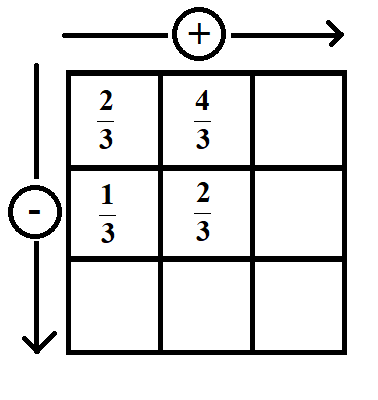
Ans:
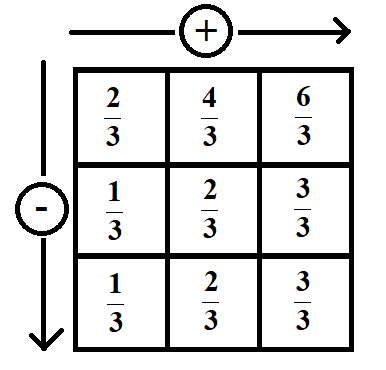
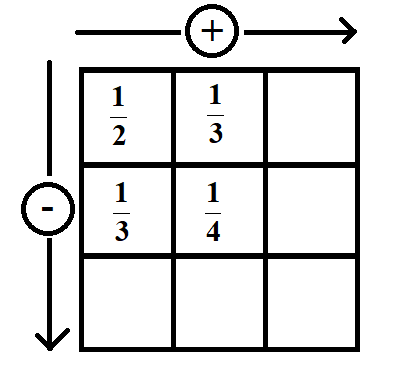
Ans:
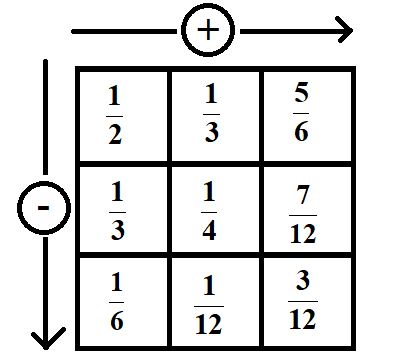
6. A piece of wire \[\dfrac{7}{8}\]meter long broke into two pieces. One piece was \[\dfrac{1}{4}\] meter long. How long is the other piece?
Ans: Total length of wire piece = \[\dfrac{7}{8}\]meter
Length of one piece = \[\dfrac{1}{4}\]meter
Let the length of the other piece be x meter
So,
$\dfrac{1}{4} + x = \dfrac{7}{8}$
$x = \dfrac{7}{8} - \dfrac{1}{4}$
$x = \dfrac{{7 - 1 \times 2}}{8}$
$x = \dfrac{5}{8}$
Hence, the other piece is \[\dfrac{5}{8}\]meter.
7. Nandini house is \[\dfrac{9}{{10}}\] km from her school. She walked some distance and then took a bus for \[\dfrac{1}{2}\] km to reach the school. How far did she walk?
Ans: Total distance to be travelled by Nandini from home to school = \[\dfrac{9}{{10}}\]km
Distance covered by bus = \[\dfrac{1}{2}\]km
Let the distance she walked be x km
$\dfrac{1}{2} + x = \dfrac{9}{{10}}\\$
$x = \dfrac{9}{{10}} - \dfrac{1}{2}\\$
$x = \dfrac{{9 - 1 \times 5}}{{10}}\\$
$x = \dfrac{4}{{10}} \text{ or }\dfrac{2}{5}$
Therefore, Nandini walked \[\dfrac{2}{5}\] km.
8. Asha and Samuel have bookshelves of the same size partly filled with books. Asha’s shelf is \[\dfrac{5}{6}\] th full and Samuel’s shelf is \[\dfrac{2}{5}\]th full. Whose bookshelf is more full? By what fraction?
Ans: fraction of books in Asha’s bookshelf = \[\dfrac{5}{6}\]
fraction of books in Samuel’s bookshelf = \[\dfrac{2}{5}\]
$\dfrac{5}{6} = \dfrac{{5 \times 5}}{{6 \times 5}}$
$\dfrac{5}{6} = \dfrac{{25}}{{30}}$
And,
$\dfrac{2}{5} = \dfrac{{2 \times 6}}{{5 \times 6}}$
$\dfrac{2}{5} = \dfrac{{12}}{{30}}$
We can see that since, \[\dfrac{{25}}{{30}} > \dfrac{{12}}{{30}}\], \[\therefore \dfrac{5}{6} > \dfrac{2}{5}\]
Hence, Asha’s bookshelf is more filled.
Difference between Asha’s and Samuel’s bookshelf = \[\dfrac{5}{6} - \dfrac{2}{5}\]
$\dfrac{5}{6} - \dfrac{2}{5} = \dfrac{{5 \times 5 - 2 \times 6}}{{30}}$
$\dfrac{5}{6} - \dfrac{2}{5} = \dfrac{{25 - 12}}{{30}}$
$\dfrac{5}{6} - \dfrac{2}{5} = \dfrac{{13}}{{30}}$
9. Jaidev takes \[\dfrac{5}{6} - \dfrac{2}{5} = \dfrac{{5 \times 5 - 2 \times 6}}{{30}}\] minutes to walk across the school ground. Rahul takes \[\dfrac{7}{4}\] minutes to do same. Who takes less time and by what fraction?
Ans: Time taken by Jaidev = \[\dfrac{5}{6} - \dfrac{2}{5} = \dfrac{{5 \times 5 - 2 \times 6}}{{30}}\]minutes
Time taken by Rahul = \[\dfrac{7}{4}\]minutes
$2\dfrac{1}{5} = \dfrac{{11}}{5}$
$2\dfrac{1}{5} = \dfrac{{11 \times 4}}{{5 \times 4}}$
$2\dfrac{1}{5} = \dfrac{{44}}{{20}}$
And,
$\dfrac{7}{4} = \dfrac{{7 \times 5}}{{4 \times 5}}$
$\dfrac{7}{4} = \dfrac{{35}}{{20}}$
Since, \[\dfrac{{44}}{{20}} > \dfrac{{35}}{{20}}\], \[\therefore 2\dfrac{1}{5} > \dfrac{7}{4}\]
Difference between their times = \[\dfrac{{44}}{{20}} - \dfrac{{35}}{{20}}\]
$\dfrac{{44}}{{20}} - \dfrac{{35}}{{20}} = \dfrac{{44 - 35}}{{20}}$
$\dfrac{{44}}{{20}} - \dfrac{{35}}{{20}} = \dfrac{9}{{20}}$
Therefore, Rahul takes \[\dfrac{9}{{20}}\]minutes less time than Jaidev.
Class 6 Maths Chapter 7: Exercises Breakdown
Exercise | Number of Questions |
Exercise 7.1 | 11 Questions with Solutions |
Exercise 7.2 | 3 Questions with Solutions |
Exercise 7.3 | 9 Questions with Solutions |
Exercise 7.4 | 10 Questions with Solutions |
Exercise 7.5 | 5 Questions with Solutions |
Exercise 7.6 | 9 Questions with Solutions |
Conclusion
The "NCERT Solutions for Class 6 Maths Chapter 7 - Fractions" provide a comprehensive understanding of fractions. It's important for students to focus on understanding the basic concepts and practising the different types of problems to build a strong foundation. Last year's question paper featured 9–10 questions from this chapter. By thoroughly studying these solutions and practising regularly, students can master fractions and perform well in their exams. Vedantu's solutions are designed to make learning easy and effective, ensuring students grasp each concept with clarity.
Other Study Material for CBSE Class 6 Maths Chapter 7
S. No | Important Links for Chapter 7 Fractions |
1 | |
2 | |
3 | |
4 | |
5 |
Chapter-Specific NCERT Solutions for Class 6 Maths
Given below are the chapter-wise NCERT Solutions for Class 6 Maths. Go through these chapter-wise solutions to be thoroughly familiar with the concepts.
NCERT Solutions Class 6 Chapter-wise Maths PDF | |





















FAQs on NCERT Solutions for Class 6 Maths Chapter 7 Fractions
1. How to easily solve Fraction for Class 6 questions?
In order to solve complex questions, students should be focusing on clearing the concepts first. The core areas can be a little challenging to grasp, but with regular practice, it is possible to learn advanced methods.
NCERT solutions help to deal with problematic areas that are mandatory while solving mathematical problems. The way these solutions are structured, help the students to get remarkable scores in their finals.
This chapter consists of different elements and features of Fraction that require more attention and hard work in the beginning. Once you understand the basics, the subject will automatically get interesting. Maths NCERT Solutions Class 6 Chapter 7 helps to provide the best answers that enhance speed skills and guidance to get your desired outcome as well.
2. How do you define fractions for Class 6 Chapter 7?
In class 6 chapter 7 the part of a whole number is defined as a fraction. The upper part of the fraction is known as the numerator, and the lower part of the fraction is known as the denominator. For example, we consider 7/19. Here, seven is the numerator, 19 is the denominator. It is read as seven-nineteenth. It is advisable to always represent the fraction in the lowest form.
3. How can I get the NCERT Solutions for Class 6 Maths Chapter 7 online?
Students can get NCERT Solutions for Class 6 Maths Chapter 7 in PDF format from this page. It is easy to download NCERT Solutions online. They can visit the website to download the PDF file and can save it on the computer. They can refer to the solutions anytime for easy preparation. All Solutions are available in easy language.
4. What are the most important topics for Class 6 Maths Chapter 7?
Class 6 Maths Chapter 7 is based on fractions. Students learn about:
The different concepts related to fractions.
Addition, subtraction, multiplication, and division of fractions.
Different methods are used for adding like and unlike fractions.
Proper, improper, and mixed fractions.
Techniques for solving different fractions
5. How can I download NCERT Solutions Class 6 Maths Chapter 7?
NCERT Solutions Class 6 Maths Chapter 7 is available on the Vedantu app and website free of cost.
Visit this page-NCERT Solutions for Chapter 7 of Class 6 Maths.
Click on the download option.
A PDF file will open and you can download it on your computer.
You can save the PDF file and use NCERT Solutions anytime for exam preparation and easy understanding of the concepts.
6. What are proper, improper, and mixed fractions?
Fractions are an important topic to cover in Class 6 Maths. Proper fractions mean the fractions when the numerator is lesser than the denominator. For example, 5/7, 4/9, ⅗ are proper fractions.
Improper fractions mean the fractions in which the numerator is greater than the denominator. For example, 13/7, 15/9, are improper fractions.
Mixed fractions: A mixed fraction is a fraction in which there is a whole number and a proper fraction.
7. How do you add fractions according to Chapter 7 of Class 6 Maths?
Like and unlike fractions can be added together. It is easy to add like fractions but it is not easy to add, unlike fractions. Sometimes we need to add a mixed number of fractions. All fractions may not be so easy to add. The following methods are used to add two or more fractions-
In like fractions, add the numerators.
Find the LCM for adding two fractions with different denominators.
Convert mixed fractions into proper fractions and then add.
8. What are fractions in ncert maths class 6 chapter 7 fractions pdf?
In ncert maths class 6 chapter 7 fractions PDF fractions represent parts of a whole, written as 𝑎/𝑏 , where 𝑎 is the numerator (indicating parts we have) and 𝑏 is the denominator (indicating total equal parts).
9. What is the difference between proper and improper fractions in ncert maths class 6 chapter 7 fractions pdf?
In ncert class 6 maths chapter 7 PDF proper fractions have numerators smaller than their denominators, representing parts less than a whole. Improper fractions have numerators that are equal to or larger than their denominators, representing one or more wholes.
10. How do you convert an improper fraction to a mixed number in ncert class 6 maths chapter 7 pdf ?
To convert an improper fraction to a mixed number, divide the numerator by the denominator. The quotient becomes the whole number, and the remainder over the denominator becomes the fractional part.
11. What are equivalent fractions in maths class 6 chapter 7?
In maths class 6 chapter 7 equivalent fractions are different fractions that represent the same value. They are found by multiplying or dividing both the numerator and the denominator by the same non-zero number.
12. How do you simplify a fraction in ncert class 6 maths chapter 7 pdf?
To simplify a fraction, divide the numerator and the denominator by their greatest common divisor (GCD).
13. How do you add and subtract fractions in class 6 maths fractions?
In class 6 maths fractions to add or subtract fractions with the same denominator, add or subtract the numerators while keeping the denominator the same. For fractions with different denominators, find a common denominator, convert the fractions, and then add or subtract the numerators.


